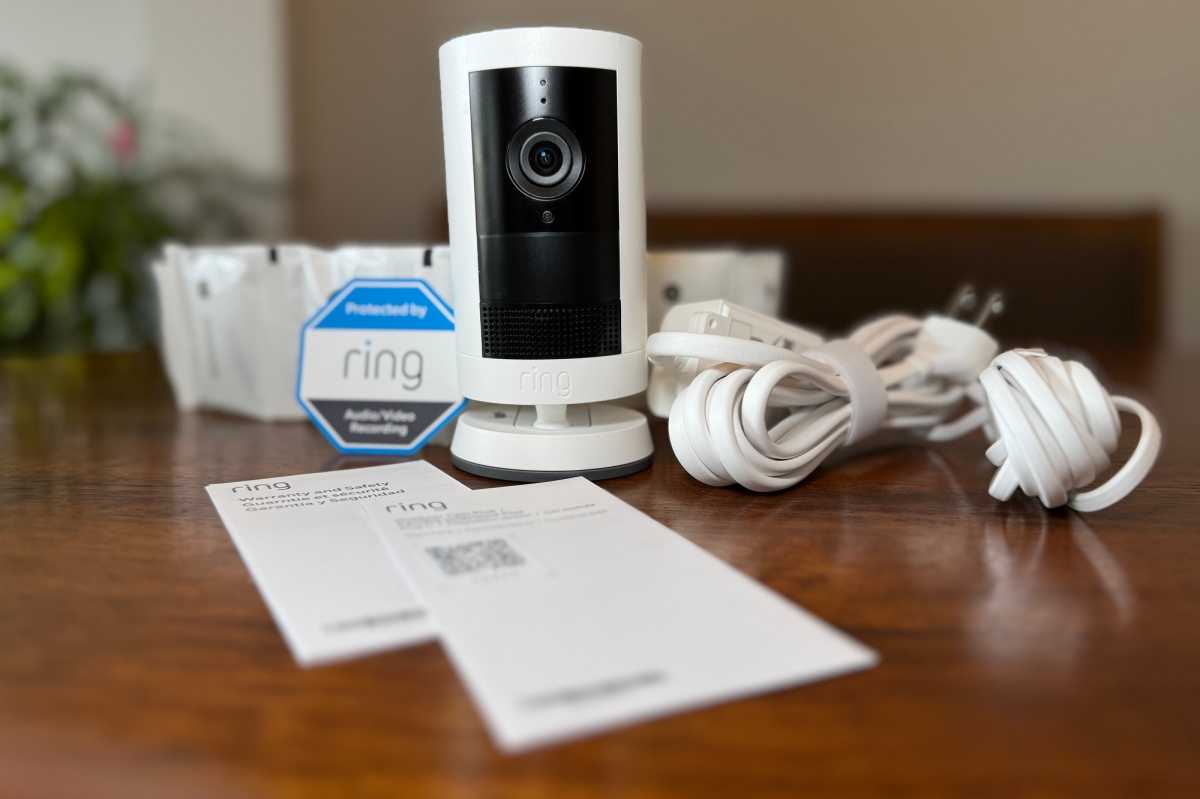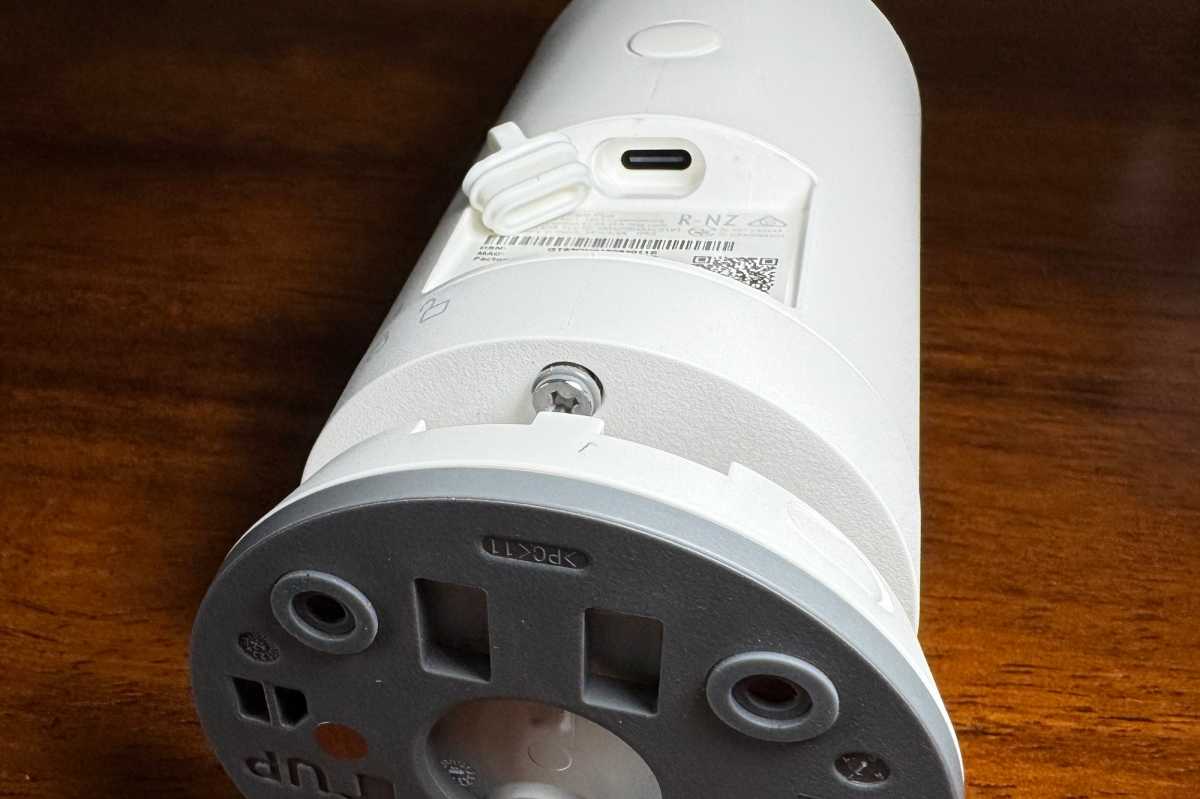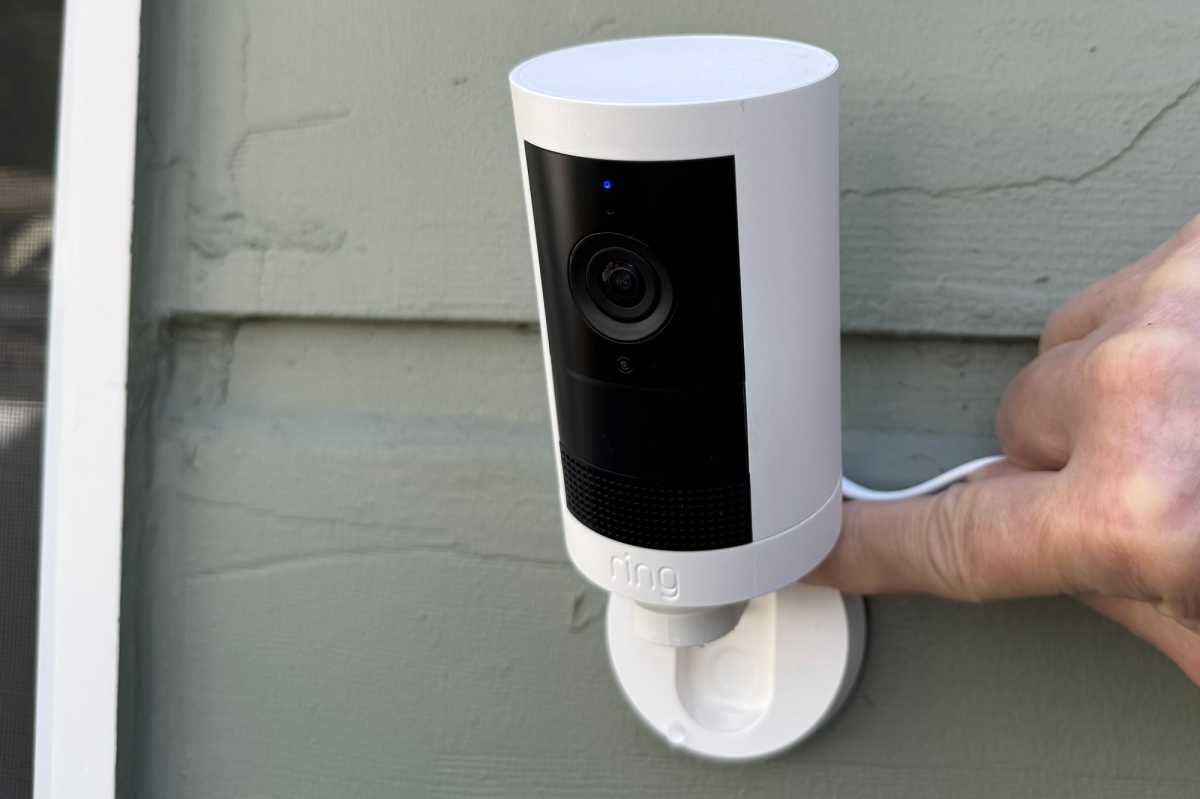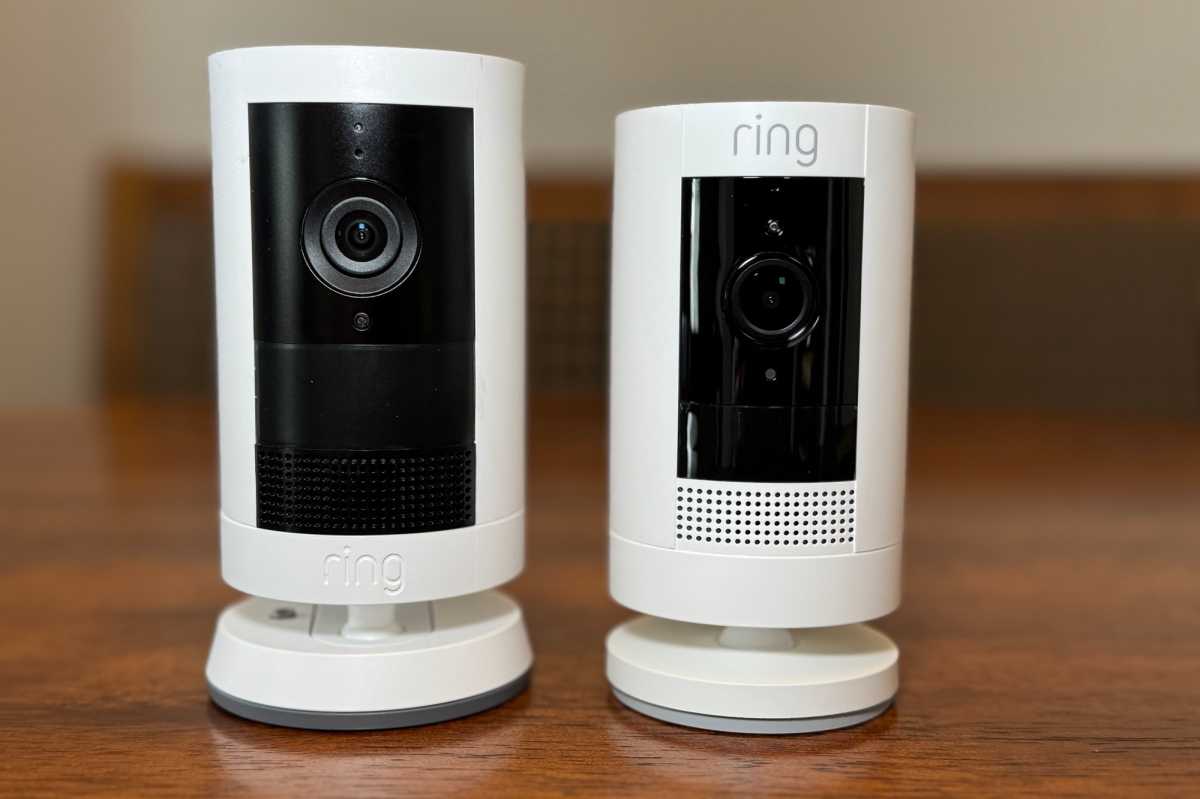Expert's Rating
Pros
- 2K resolution
- Person, vehicle, and package detection
- Wide field of view
- Dual-band Wi-Fi
Cons
- 2K resolution isn’t the leap you might be expecting
- Subscription required to unlock all features, including video recording
Our Verdict
The Ring Outdoor Cam Plus isn’t a quantum leap in terms of features or performance, but it is a respectable addition to the comprehensive Ring home security ecosystem.
Price When Reviewed
This value will show the geolocated pricing text for product undefined
Best Pricing Today
Ring says its new Ring Outdoor Cam Plus delivers “brilliant 2K” video. But while there are plenty of design improvements here, I just don’t see much of a leap in image quality between this new model and the third-generation Ring Stick Up Cam I reviewed 5 years ago.
You’ll spot some design improvements in the new camera, and as you’ll see in the screenshots below, it captures slightly more detail, but the improvement in image quality is exceedingly minor, even at maximum zoom.
There are more concrete improvements in some of the new camera’s other specifications. But if you already own a Ring Stick Up Cam (3rd Gen), which has since been renamed the Ring Outdoor Cam, there’s little reason to replace it with this new model.
If you’re shopping for a new camera, on the other hand, and you want to join or stay in the Ring ecosystem, it’s worth spending the extra $20 to get this new model for $100 compared to $80 for the non-plus Outdoor Cam.
Note: To reduce the possibility of model confusion, I’ll refer to the older camera by its original name, the Ring Stick Up Cam (3rd Gen), from here on.
Device linking is one of the best features of Ring’s comprehensive home security ecosystem.
Specifications

The Ring Outdoor Cam Plus comes an extra-long power cord to accommodate mounting in out-of-reach locations, a window sticker, and enough screws to accommodate any need.
Michael Brown/Foundry
Video resolution should have been the most important improvement in the new camera’s specification, but as I’ve already said, I’m having a difficult time perceiving much of any difference. I probably should have kept my expectations in check, as the jump from 1920 x 1080 (1080p) to 2560 x 1440 (2K) just isn’t all that significant.
But when my brain sees 1080 vs 2K, it automatically thinks the improvement is 2X. It’s obviously not, but I imagine manufacturers are perfectly happy for consumers to come away with that perception. The reality is a relatively minor increase of 360 horizontal pixels and 640 vertical pixels. You’ll see the difference the most when you zoom in on a person or object in the camera’s field of view.


Speaking of field of view, the new camera improves on that spec, too: 160 degrees diagonal, 140 degrees horizontal, and 80 degrees vertical, compared to 143-, 115-, and 59 degrees respectively for the camera it replaces. You’ll also get color night vision in low light environments.
When hardwired to power, the camera benefits from Ring’s Advanced Pre-roll feature, which records up to 6 seconds of video (in 1080p) and audio before a motion alert is generated. This feature is not available in battery-powered mode. If you’re looking for Ring’s radar-powered Birds Eye View feature, you’ll need to step up to something in Ring’s Pro-line cameras to get that.


The Ring Outdoor Cam Plus can operate on AC power—the Plug-In model is reviewed here—but it can also house a removable rechargeable battery that you can buy separately. You also have the option of buying the camera with a battery and without an AC adapter for the same price. Finally, Ring also offers a SKU with a battery and a solar panel for $160 (discounted to $140 at the time of this review).

The Ring Outdoor Cam Plus relies on a USB-C port for power, which can come from an AC adapter or a solar panel if you opt for the model that comes with a battery.
Michael Brown/Foundry
Ring has redesigned the new camera’s power supply for the better, with a power cable ending in a USB-C plug at the camera end, a wall-mountable power supply in the middle of the cable, and a two-prong plug at the outlet end. The Stick Up Cam comes with two different power cables: one with a wall wart power supply for indoor installations and the second with a two-prong cable at the outlet end that gets mated with the AC adapter after you remove its own two-prong plug. That power adapter can also be wall mounted.
The final big improvement is the new camera’s stand, which provides an extra degree of flexibility in terms of mounting options: You can operate it on a table, mounted to a wall, in a roof eave, or even on the ceiling. That last option requires a $20 accessory for the Ring Stick Up Cam (although cheaper mounts are available from third-party manufacturers).

The new stand design makes the Ring Outdoor Cam Plus much easier to mount to a wall or even a ceiling.
Michael Brown/Foundry
Installation and setup
Ring has camera installation down to a science these days. The company has always excelled at this, but now you need only to scan the QR code on the back of the camera to get things started (assuming you already have the Ring app installed). If you have existing Ring devices installed, you won’t even need to provide your Wi-Fi password. This new model also features dual-band Wi-Fi support; you can add it to either your 2.4- or 5GHz network.
The next steps are to indicate where the camera will be installed—indoors or out—and to give it a name (with the option of picking one from a list). Once these initial steps have been completed, the camera will most likely pause for a firmware update and then you can proceed with the rest of the physical installation. If you’re installing it outdoors, you might want to mount it under an eave or tilted down a few degrees so that rainwater doesn’t drip down its face and over its lens.

The new Ring Outdoor Cam Plus (left) compared to the Ring Stick Up Cam (3rd Gen), since renamed the Ring Outdoor Cam.
Michael Brown/Foundry
As with other Ring cameras, the Outdoor Cam Plus has three motion-detection zones that let you fine tune the regions of the camera’s field of view that will be monitored for motion, so you can block out swaying bushes, trees, and other distractions. You can also adjust the camera’s sensitivity to motion and establish a schedule if there are times you want the camera to ignore motion.
Ring’s Smart Alerts feature lets you customize the types of motion that will trigger the camera to record, and which types will produce alerts in the form of push notifications. For each type of motion—a person, a vehicle, or any other motion—you can have the camera record a clip, send you a push notification, do both, or do neither.
Device linking is one of the best features of Ring’s home security ecosystem. You can set up one Ring camera’s motion detector to trigger not just any other Ring camera to also record, but you can also have it trigger Ring’s smart lighting devices—in your landscaping, anywhere on your house, or inside your house—to turn on.
Performance

The Ring Outdoor Cam Plus has an internal cavity to harbor Ring’s rechargeable battery.
Michael Brown/Foundry
As you’ve seen in the screenshots I took, the Ring Outdoor Cam Plus makes no great leap in image quality compared to the Ring Stick Up Cam (3rd Gen). That said, if I was in the market for a new outdoor Ring camera, I’d still buy this new one over the older model—if for no other reason that it will get security-enhancing firmware updates longer. The manufacturer guarantees to offer these for at least four years after the device is no longer available to purchase directly from Ring.
And for those unfamiliar with Ring’s subscription plans, know that you’ll need to pu
Melden Sie sich an, um einen Kommentar hinzuzufügen
Andere Beiträge in dieser Gruppe

Unless you fly strictly under the radar, your Facebook account has va

Sometimes all you need from a laptop is the bare minimum—and in that



It’s common sense that if you have a Windows PC, you need a third-par

As America apparently digs in for the long haul in a trade war with C

